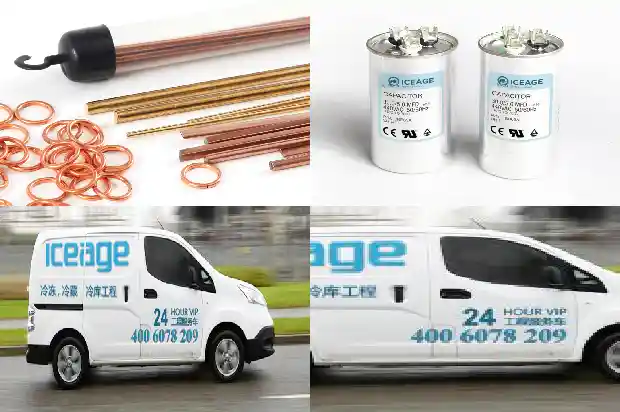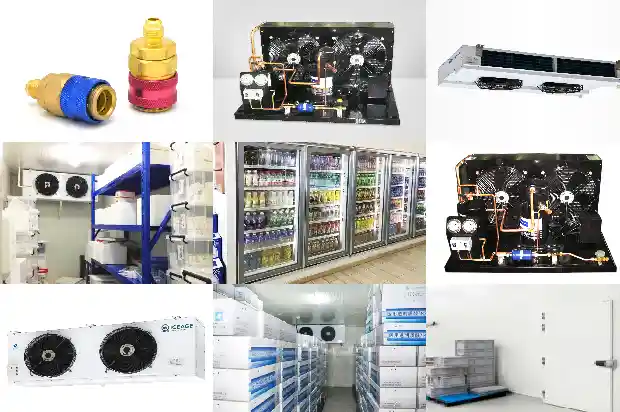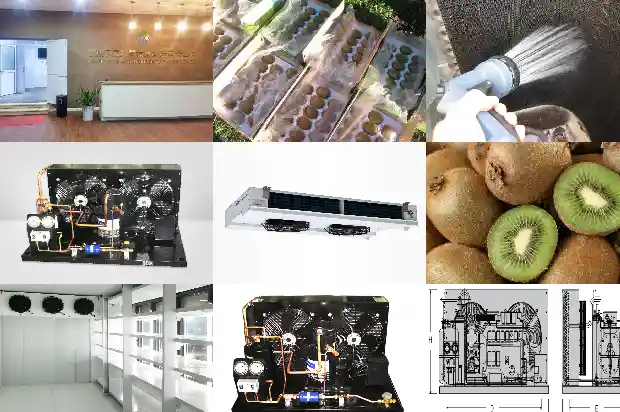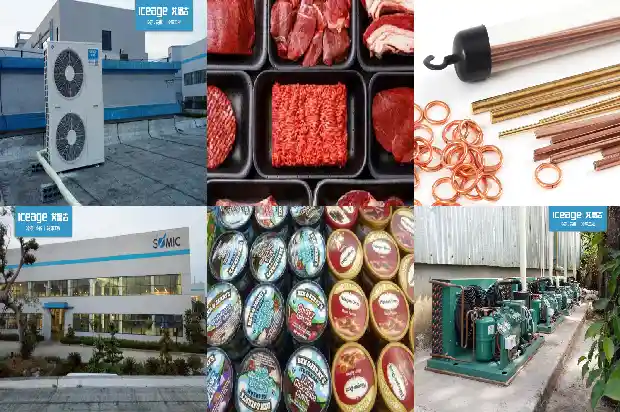What Impact Does Pressure Have on the Refrigeration System?
2025-02-25
When a fault occurs in the refrigeration system, it is generally impossible to directly see where the fault is located, nor can the components of the refrigeration system be disassembled and dissected one by one. Only by checking from the outside, finding abnormal phenomena during operation, and conducting a comprehensive analysis. Detecting the pressure and temperature of the refrigeration system is of great importance.

- Suction Pressure and Discharge Pressure
The refrigeration system can be divided into high - pressure and low - pressure parts during operation. The discharge pressure refers to the pressure of the refrigerant gas in the exhaust pipe at the outlet of the compressor. The pressure at the suction port of the compressor is called the suction pressure, and the suction pressure is close to the evaporation pressure. The difference between the two is the flow resistance of the pipeline.
For convenience, the evaporation pressure and condensation pressure of the refrigeration system are detected at the suction and discharge ports of the compressor. That is, they are usually called the suction and discharge pressures of the compressor. The purpose of detecting the suction and discharge pressures of the refrigeration system is to obtain the evaporation temperature and condensation temperature of the refrigeration system, so as to understand the operating conditions of the refrigeration system. - Condensation Pressure
The condensation pressure is the pressure at which the refrigerant gas condenses into a liquid in the condenser. Since the pressure inside the condenser in the refrigeration system cannot be measured, and in fact, the pressure drop of the refrigerant in the exhaust pipe and the condenser is actually very small. Therefore, whether in design, debugging, or maintenance, it is generally considered that the discharge pressure is approximately equal to the condensation pressure.
Relationship between Condensation Temperature and Refrigeration Capacity: Let's simply look at the relationship curve between the condensation pressure and condensation temperature of R22 refrigerant.
It can be easily seen from the graph that the condensation temperature and condensation pressure change proportionally. The condensation pressure and condensation temperature correspond to each other. The lower the condensation pressure (high - pressure), the lower the condensation temperature; the higher the condensation pressure (high - pressure), the higher the condensation temperature. Knowing the condensation pressure, we can look up the value of the condensation temperature in the table.
Relationship between Heat Load and Condensation Pressure: Simply put, this is the relationship between the load on the condensation side and the condensation pressure.
Under a constant operating condition (refrigerant flow rate), the greater the heat load, the higher the condensation pressure, and vice versa. We can imagine that when the condenser you designed is small (the heat load is relatively large), the refrigeration system is likely to give a high - pressure alarm.
Influence Factors of Pressure on the Refrigeration System
- Suction PressureFactors for low suction pressure: When the suction pressure is lower than the normal value, the factors include insufficient refrigeration capacity, small cooling load, small opening degree of the expansion valve, low condensation pressure (for capillary - tube systems), and unsmooth filters.

Factors for high suction pressure: When the suction pressure is higher than the normal value, the factors include excessive refrigerant, large refrigeration load, large opening degree of the expansion valve, high condensation pressure (capillary - tube systems), and poor compressor efficiency. - Discharge PressureFactors for high discharge pressure: When the discharge pressure is higher than the normal value, generally, there are factors such as small flow rate of the cooling medium or high temperature of the cooling medium, excessive refrigerant charge, large cooling load, and large opening degree of the expansion valve.
These cause an increase in the circulating flow rate of the system, and the condensing heat load also increases accordingly. Since the heat cannot be completely dissipated in time, the condensation temperature rises, and what can be detected is the rise in the discharge (condensation) pressure. In the case of a low flow rate of the cooling medium or a high temperature of the cooling medium, the heat - dissipation efficiency of the condenser decreases, causing the condensation temperature to rise.
In the case of a low flow rate of the cooling medium or a high temperature of the cooling medium, the heat - dissipation efficiency of the condenser decreases, causing the condensation temperature to rise. For the reason of excessive refrigerant charge, the excess refrigerant liquid occupies a part of the condenser tubes, reducing the condensation area and causing the condensation temperature to rise.
Factors for low discharge pressure: When the discharge pressure is lower than the normal value, the factors include low compressor efficiency, insufficient refrigerant amount, small cooling load, small opening degree of the expansion valve, unsmooth filters, including the filter screen of the expansion valve, and low temperature of the cooling medium.
The above - mentioned factors will all cause a decrease in the refrigeration flow rate of the system and a small condensing load, resulting in a decrease in the condensation temperature. Judging from the above - mentioned changes in suction pressure and discharge pressure, the two are closely related. Under normal circumstances, when the suction pressure rises, the discharge pressure also rises accordingly; when the suction pressure drops, the discharge pressure also drops accordingly.
The approximate situation of the discharge pressure can also be estimated from the change of the suction pressure gauge.
Related Articles
- What Are the Common Causes of High - pressure Faults in Chillers?
- Winter Approaches: How to Solve the Low High - pressure Issue of Air - cooled Condensing Units?
- Common Pressure Valves and Protection Devices in Refrigeration Units
- How to Troubleshoot and Repair High - pressure Protection of Air - cooled Units?
- How to Read the High - and Low - Pressure Gauges of Refrigeration Air - conditioners?
- Air - conditioner Low - pressure Alarm? These Nine Common Causes
- Why Does the Evaporation Temperature of the Refrigeration System Drop Too Low? And Why is the Condensing Pressure Too High?
- What are the Cooling and Heating Pressures of an Air Conditioner? How to Calculate the Optimal Refrigerant Quantity?
- Common Causes and Analysis of High and Low Pressure Alarms
- Obscure Knowledge of Static Pressure, Dynamic Pressure, Latent Heat and Sensible Heat in the HVAC Industry
- Multi-split air conditioner: Nitrogen charging for welding, pressure maintaining, vacuuming and refrigerant charging
- What Causes Noise in Pressure Reducing Valves?
- Pressure Gauge in Refrigeration Equipment
- Reasons and Solutions for High and Low Condensing Pressure in Air-cooled and Water-cooled Systems
- Principle of Multiple Storages in One Unit and Evaporation Pressure Regulation Methods
- Causes and Solutions for Elevated Pressure in Cold Storage
- Analysis and Treatment of Common Low-Pressure Faults in Chillers
- What are the effects of pressure and temperature on the refrigeration system of a cold storage?
